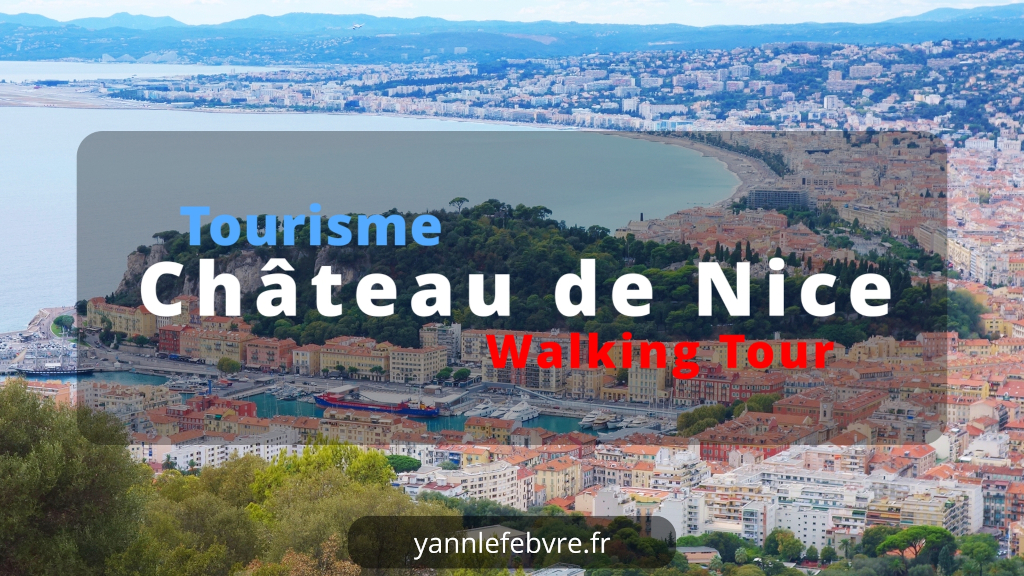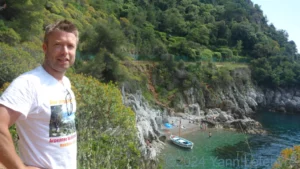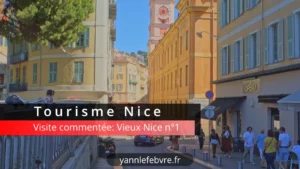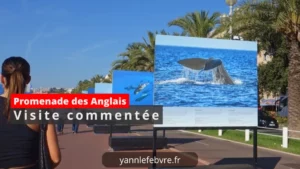Table of content
The Nice castle was present on the hill until 1706 then over time, this place became a wooded park of approximately 19 hectares. It is a place for picnics and festive events, a memorial and archaeological space, a tourist site with magnificent panoramas of the port of Nice and the old town, a place of choice for children and athletes. In summary, it is an unmissable place for locals and for the 4 million tourists who visit Nice each year.
Access to the Nice castle and useful information
Access to the Nice casstle
From the previous town, we can go up to the castle via the « Jules Eynaudi » staircase or via the « Menica Rondelly » climb. Both roads lead to Allée François Aragon. In the video I use the « Jules Eynaudi » staircase. This is the entrance that I use as a Nice resident, because it is central in the old town and less steep than the staircase on Montée Lesage which I use to go back down.
From the Promenade des Anglais, we can go up to the castle by elevator at 1 rue des Ponchettes or by climbing Lesage. Large staircase next to the Bellanda Tower.
It is also possible to get in by car, but as I prefer walking and public transport, I advise you to take the little tourist train, the elevator or use your legs to fully enjoy Nice.
Tip: you can also use the Eberlé climb on foot, which begins near Place Garibaldi to the castle garden, on the east side near the archaeological excavations. The interest is less touristy than practical. You can exit directly at the « Garibaldi » tram stops on lines 1 and 2.
Useful information about the Nice castle
Opening hours: The park is free and contains drinking water fountains.
- From 8:30 a.m. to 6 p.m. from October 1 to March 31.
- From 8:30 a.m. to 8 p.m. from April 1 to September 30.
Traditional cannon fire from the castle
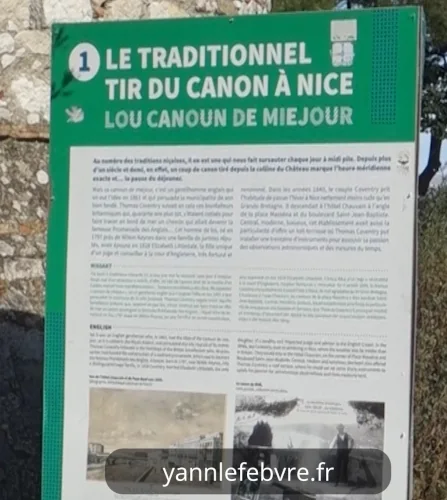
According to an urban legend, a Scottish lord, politician and soldier, named Sir Thomas Coventry in 1863, not to be confused with another Scottish lord, the acteur Sean Connery , had problems eating at home with his officers. As his wife was often late, he used this cannon shot as a signal for her to make him something to eat, he explains. When he returned home to his Edinburgh castle, he left a sum of money at Nice town hall at the time to keep this ritual going. It was then a Nice politician named Malaussena who passed a municipal decree so that this tradition continued.
Currently the cannon fire continues to tell us the time, every day, at noon, thanks to Philippe Arnello, pyrotechnician at the castle hill for more than thirty years. There is only one day in the year when the cannon does not sound, it is July 14 in memory of the 2016 attack in Nice on the Promenade des Anglais. There is also a Memorial to the victims of the Nice attack, in the castle park visible in the vidéo du château de Nice.
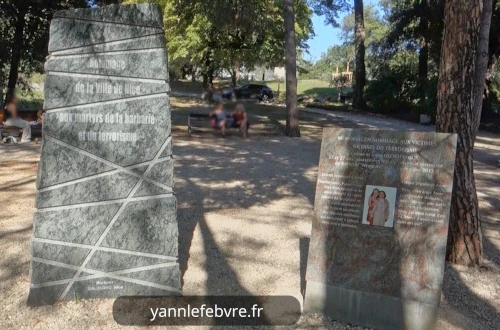
Obviously it’s no longer a real cannon, but just or big firecracker which is made only to make a lot of noise (Technical term: fireworks air chestnut).
Tourist train: there is a small paid tourist train which allows you to visit the park.
Catering on site: a restaurant and a snack bar are present.
Public toilets: paid and located east of archaeological excavations.
Children: play structures are present in the park.
Nice Castle Cemetery
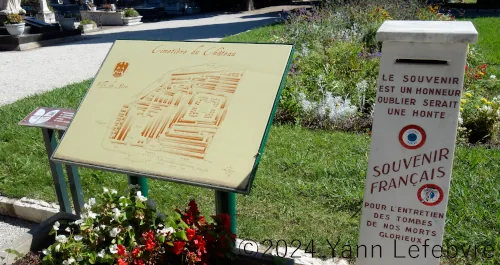
Following a ban on burying the dead in churches, the castle’s Christian cemetery was opened in 1783. A Jewish cemetery was also moved next door, then a few years later, a Protestant cemetery was set up near the other two. There is therefore not one cemetery, but 3 different cemeteries, all accessible via Allée François Aragon which I take in the video.
The castle cemeteries are the most interesting in Nice, due to their exceptional location, their religious, social and cultural eclecticism. There are popular tombs, rich notables and foreigners brought by winter tourism (Russians, Poles, Germans, English and Americans), in classical, Gothic or Italian styles.
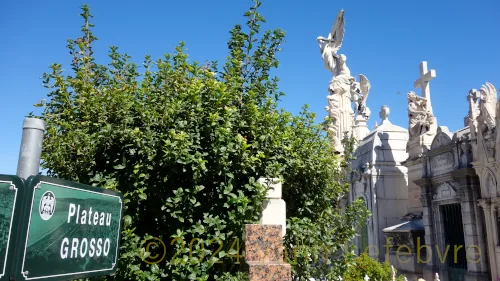
The Christian cemetery contains many personalities. They come from the high political society of Nice, the cultural world, benefactors, etc. As for the neighboring Jewish cemetery, it remains consistent with Hebrew funerary tradition. René Goscinny was brought there in 2000. At the entrance, a cenotaph recalls the memory of the Jewish victims of the Shoah in Nice.
Without giving too many names, I would cite 2 names known to everyone! There you can discover the strangely decorated tomb of Marguerite Duthuit-Matisse, wife of the famous painter Matisse, whose museum is located at the Arènes de Cimiez or that of Mercedes Jellinek. (The daughter of the co-founder, with Benz, of the famous Automobile firm whose father, in tears, chose his first name to perpetuate it through the Mercedes brand.)
I have produced a summary of the document downloadable here:
I am not necessarily passionate about cemeteries, but if this interests you in a historical way then I suggest a very complete link on the cemeteries of Nice: https://artplastoc.blogspot.com/search?q=cimeti%C3%A8re
And then to make you want to visit it, I can tell you that it is the first monumental cemetery in France in front of Father Lachaise in Paris. It is also the 4th in Europe after Genoa, Venice and Milan.
Nice castle waterfall
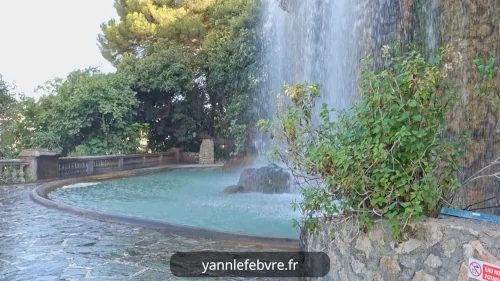
Following the destruction of the castle in 1706, the hill became a wasteland. One of the Dukes of Savoy, King of Sardinia, granted the land and its remains to the city of Nice in 1822 in order to establish a public garden for rich winter residents and the local population. Many professionals followed one another for the work and for the numerous developments which accumulated over time. We have been thinking about creating a fountain for a long time.
In 1884, the irrigation of Nice and the park was carried out efficiently thanks to the creation of the Vésubie canal, derived from Saint-Jean la Rivière, over 30 km. In 1885, the ruins of the keep, which still remained, were transformed into a decorative waterfall. The waterfall will be filled with water on June 27, 1885 at a flow rate of 200 liters/second. With it, the park will be embellished with several fountains and an efficient irrigation system.
Panoramic view at Nice Castle
On this map I have highlighted the panoramic views that I prefer in the order of appearance in the video
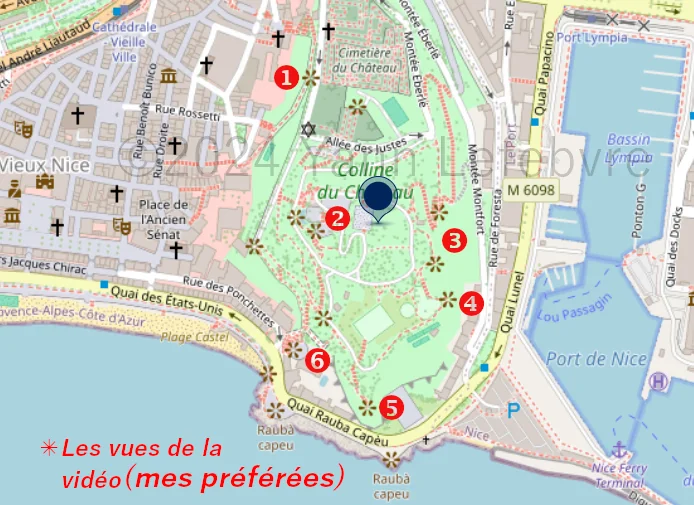
1) The view of the old town from Allée François Aragon opposite the cemeteries of the Nice castle
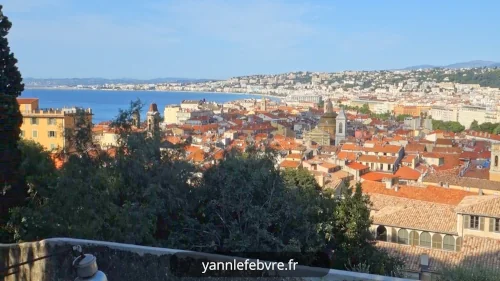
Obviously, I chose this viewing angle, but the view is 180°, from the mountains to the north, to the sea to the south. I’m scanning the video which gives you a fairer idea of this magnificent view which is for me the best overview of the old town of Nice.
2) The view from the summit above the Nice castle waterfall.
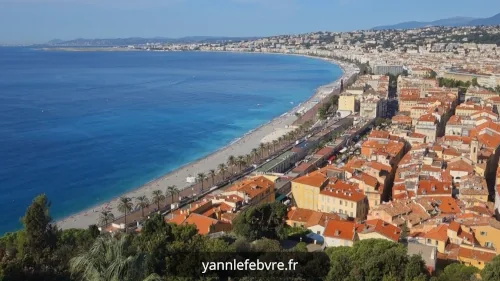
The photo is limiting but the view is 180° at this level. You can admire the Bay of Angels, the Promenade des Anglais and the organization of the city of Nice around the old town in the video. It is a must-see view in Nice.
3) There are 3 viewpoints to the east which dominate the port.
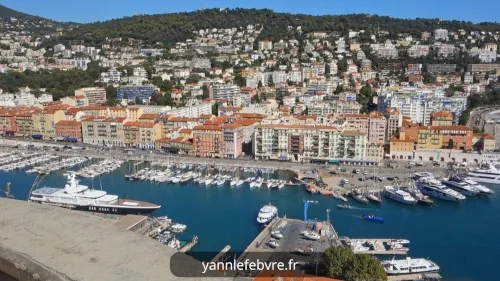
Remember to take your photos in the afternoon on this side of the castle so as not to be backlit, because the sun rises in the east. Here again the view is panoramic, but I chose this first angle, because there are, opposite, all the small boats typical of the port of Nice (the pointed ones) that you absolutely must go see.
4) Another view of the port of Nice from the Nice castle
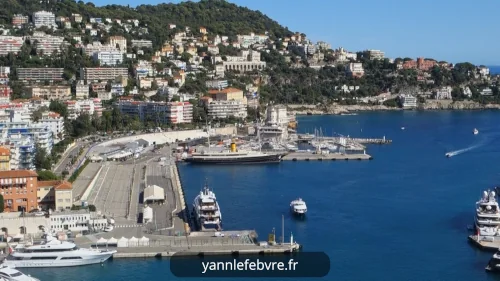
Here again the view is panoramic, but I chose this angle, because I explain and show in the video several interesting buildings to know such as for example the former house of the famous Scottish actor who played James Bond, the agent 007 in the 60s, Sir Sean Connery whom I really liked. The Englishman’s castle, famous for its unusual architecture. Or closer in the photo, the place called « le Plongeoir » which has become a restaurant, the Nice nautical club and even the Reserve. The seaside, between the Reserve and Cap de Nice, is very popular with the people of Nice and little known to tourists.
5) Viewpoint going south on the sundial!
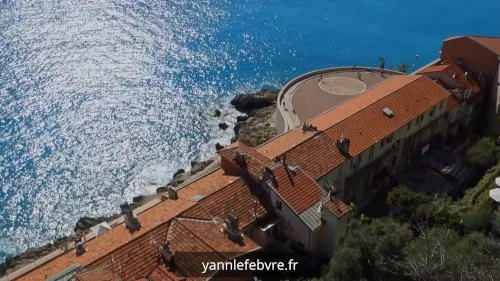
Here again the view is panoramic, but I chose this angle to show you the sundial of Nice on the Quai Rauba Capeu, just at the foot of the Château hill. Since its creation in 1981, all Nice residents have tested the hands of this giant clock. Position yourself in the middle of the dial, in the location provided for this purpose, and observe your own shadow. She tells time! There is often the artistic work « I love Nice » which sits at this location. It is also a site not to be missed when coming down from the castle to take magnificent souvenir photos.
6) View of Bellanda Tower
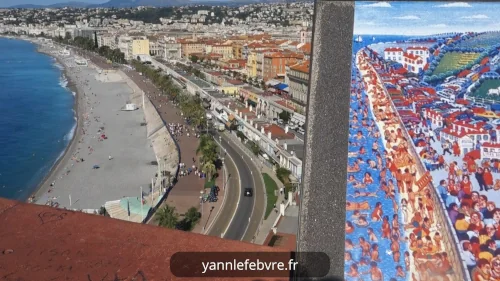
I would still say the same thing as for the other views. It is superb, which is why I preferred to show you this montage. I just advise you to stop there in the morning so as not to be backlit and to admire in the foreground the Promenade des Anglais, the Bay of Angels, the Cours Saleya market and in the background the mountain ranges which surround the city from Nice. An orientation table shows you the names of all the mountains on the horizon.
Archaeological site of the Château de Nice
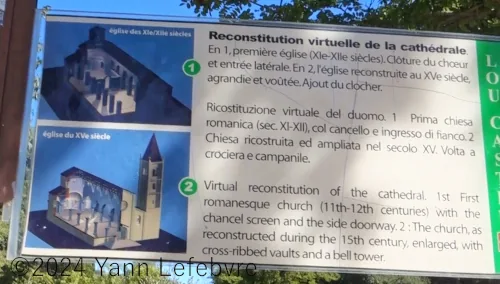
The Hill of the Château de Nice experienced its first occupations in the Neolithic (around approximately 3,000 BC). This hill is still an unmissable site today. The archaeological site of the Colline du Château is made up of several elements, but I will only talk about the ruins of the old cathedral of Nice. In 1859, archaeological excavations, undertaken under the direction of Fernand Benoit, revealed the remains of the medieval cathedral.
The creation of this religious building dates from the 5th or 6th century AD. Sainte-Marie Cathedral evolved, was rebuilt several times, then because of the fortifications and the migration of the population towards the lower town (current old town) was abandoned in favor of Sainte-Réparate Cathedral until its destruction in 1706 with the entire fortress.
For more information I recommend a page from the city of Nice website:
https://www.nice.fr/fr/culture/patrimoine/les-fouilles-du-chateau
Bellanda Tower of the castle
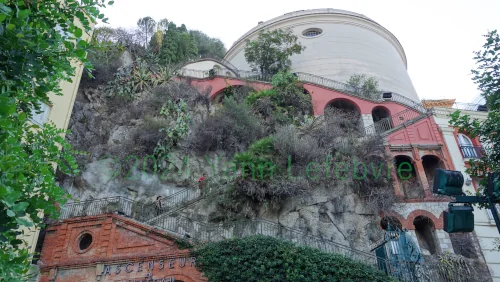
Initially, it is not a medieval tower, but a tower dating from 1436. One of the Dukes of Savoy had the fortress reinforced by the construction of new towers, one of which, to the south, was named, « tower of Môle ». In the 17th century, it became the « Saint-Elme » tower in reference to the patron saint of sailors. It was destroyed with the fortress in 1706. As I explain in the paragraph on the Castle Waterfall, the land and ruins are ceded to the city of Nice.
At this time, a certain Honoré Clérissi built a house or pension attached to the old Saint-Elme tower, of which only the base remained. The imposing building he had built, henceforth called the « Clérissi » tower, was covered with a roof terrace in the center of which sits a bell tower. It was in the 1860s and 1870s that the name « Bellanda Tower » was given to the old Saint-Elmo Tower.
This pension welcomed famous people such as the French romantic composer Hector Berlioz. The Château hill was classified by prefectural decree. From 1937, the city wanted to expropriate the owners of this pension which became the Hôtel-Suisse, but this expatriation was not effective until 1957. In the meantime, the city built an interior elevator. The cage was installed in the old well dug in 1540 by Charles III of Savoy. As an access route, the gallery created by the German army was used and the elevator was put into service in July 1953.
The city rehabilitated the Bellanda Tower and installed a naval museum there, then today the Bellanderium.
The Bellanderium: Want to know more about the castle and its history? The Bellanda Tower collects the words of this privileged witness that is the Castle Hill.
Access: Montée Lesage
Information: Heritage Center – The Senate – 04 92 00 41 90
History of the Château de Nice
The article is already long and as the Wikipedia page is correctly informed about the history of the Château de Nice, I refer you to this page: History of the fortifications



